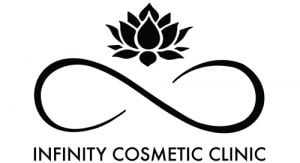Many people resort to non-surgical procedures like nasal fillers in their quest for precise facial features and refined aesthetics. A more harmonized and contoured face appearance can be achieved without surgery with these minimally invasive treatments. Complications are possible, though, just like with any aesthetic procedure. In this piece, we examine the several facets of nose filler treatments gone wrong, investigating the causes of these incidents and offering thorough guidance on what people should do if they encounter unanticipated and undesired results.
Understanding Nose Fillers
Soft tissue fillers, sometimes referred to as dermal fillers or nose fillers, are injectable materials that are used to improve and remodel the nose. Calcium hydroxylapatite, poly-L-lactic acid, and hyaluronic acid are often utilized filler materials. These fillers can provide people with a non-surgical substitute for traditional rhinoplasty by subtly correcting minor nasal defects when used by a qualified and experienced practitioner.
Common Issues with Nose Fillers
Despite the non-invasive nature of nose filler procedures, complications can arise, leading to results that fall short of the desired outcome. Here are some common issues associated with nose fillers gone wrong:
1. Asymmetry
Perceived asymmetry may arise from uneven filler placement or distribution. One side of the nose can look different from the other, which can be upsetting and frustrating.
2. Overfilling
Using too much filler can make an appearance seem artificial and overdone. The nose could seem overly enhanced, going against the desired modest improvement.
3. Lumps and Bumps
The smooth and natural texture of the nose may be compromised by the development of lumps or bumps as a result of subpar injection procedures.
4. Migration
Fillers can sometimes shift from the injected site over time, leading to a distorted or uneven appearance of the nose.
5. Infection or Allergic Reactions
Although rare, infections or allergic reactions to filler materials can occur, manifesting as redness, swelling, or other adverse effects.
What to Do When Nose Fillers Go Wrong
Addressing complications from nose fillers requires a strategic and informed approach. Here is a comprehensive guide on what individuals can do when faced with undesired outcomes:
1. Seek Professional Assistance
As soon as you discover any problems with your nasal filler, get in touch with the surgeon who carried out the treatment. A qualified and knowledgeable expert can evaluate the circumstances and suggest suitable remedial actions.
2. Avoid DIY Solutions
It’s important to fight the urge to take care of filler-related issues on your own. Attempts to massage the filler into place or use at-home treatments can make the issue worse and perhaps cause other issues.
3. Consider Hyaluronidase Treatment
The enzyme hyaluronidase is useful for resolving filler-related problems since it can break down hyaluronic acid fillers. To undo the effects of the filler and restore a more natural appearance, your practitioner might advise you to take this choice.
4. Be Patient
Certain filler-related issues, like bruising or swelling, could go away on their own with time. Refrain from making snap decisions and allow your body to acclimate to the filler on its own.
5. Consult with Another Professional
If you are not happy with the answer or help you received from the first practitioner, you might want to get a second opinion from another respected aesthetic medicine specialist. An alternative viewpoint could offer perceptions and answers that weren’t first thought about.
6. Document and Communicate
Make sure you document all of your symptoms, worries, and correspondence with the practitioner. Having well-organized records can be helpful should you choose to seek advice from another expert or, in severe circumstances, go to court.
7. Explore Reversal Options
There can be several reversal methods available, depending on the type of filler utilized. Hyaluronidase can be useful for hyaluronic acid fillers, however, it could be necessary to use different methods for other fillers. Together with your practitioner, decide which of these possibilities is the best course of action.
Preventing Nose Filler Complications
Although resolving issues is crucial, the foundation of a fruitful and fulfilling aesthetic journey is prevention. Before conducting nasal filler operations, take into consideration the following advice to reduce the risk of complications:
1. Choose a Qualified Practitioner
Make sure the person administering your nose fillers is knowledgeable and skilled. Assess their experience level by looking for testimonials, recommendations, and before and after photos.
2. Communication is Key
Communicate your concerns and expectations to your practitioner clearly and coherently before the operation. Understanding your goals very well can help to get the best outcome.
3. Ask Questions
Ask any questions you may have regarding the filler material, the process, and any possible dangers. A successful conclusion depends on having an open and knowledgeable discussion with your practitioner.
4. Comprehending risks and Complications
Learn about the possible dangers and difficulties that come with getting a nasal filler. A well-informed person is more capable of making wise choices regarding their artistic development.
5. Follow Aftercare Instructions
Follow the aftercare recommendations that your practitioner has given you. Appointments for follow-up and appropriate care are essential for keeping an eye on things and treating any possible problems early.
Although nose fillers provide a non-surgical option for people looking to improve their faces, problems can occur. Persons can traverse the world of aesthetic operations with greater confidence if they are aware of the potential problems, know what to do if something goes wrong, and take preventive action. To handle nasal filler issues and ensure the best possible outcome for your beauty and well-being, keep in mind that seeing a specialist is essential. People can take a more confident and satisfied approach to their aesthetic journey by being proactive and well-informed.




